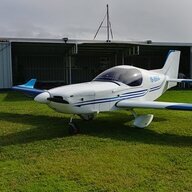I used to fly in all sorts of weather and sometimes to deadlines. I don't do this any more & should never have done it. I was just lucky. Now I fly when conditions are good. After all I fly for fun. Building my own aircraft was an achievement I thought I'd never get to. You have to make things happen. I have lots a personal minimums like my reserve is an hours fuel. I always do a personal IMSAFE before deciding to fly. Sometimes the day looks fantastic but for some reason I don't don't feel enthusiastic enough so I do something else. Flying means you have to be on top of your game at all times. I got Shingles in August & haven't flown since. It is nearly gone but not quite so I don't pass IMSAFE though most of the rest of my life is back to pretty much normal.
I've seen people come unstuck because they thought they were better than they actually were. I detest show offs. When I have a passenger I fly conservatively. I have never had a passenger who did not want to fly with me again but I have flown with others who wanted to impress me & I have never flown with them again.
I have always liked the statement attributed to Captain Alfred Gilmer Lamplugh, C.B.E., F.R.Ae.S, M.I.Ae.S., M.C.A.I., F.R.G.S. a WW1 pilot & Principle Surveyor for The British Aviation Insurance Co., Ltd back in the 1920s
“Aviation in itself is not inherently dangerous. But to an even greater degree than the sea, it is terribly unforgiving of any carelessness, incapacity or neglect.”




